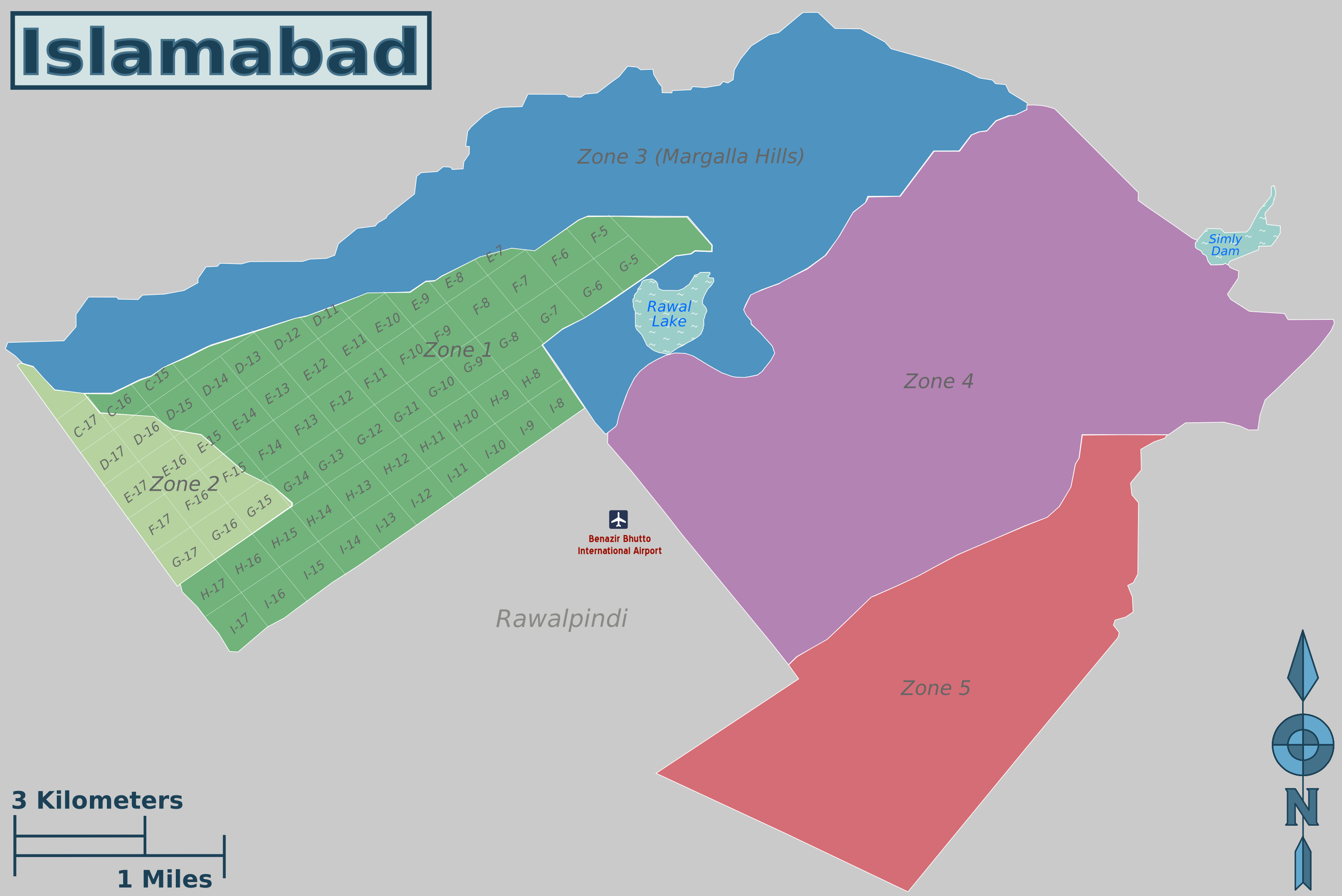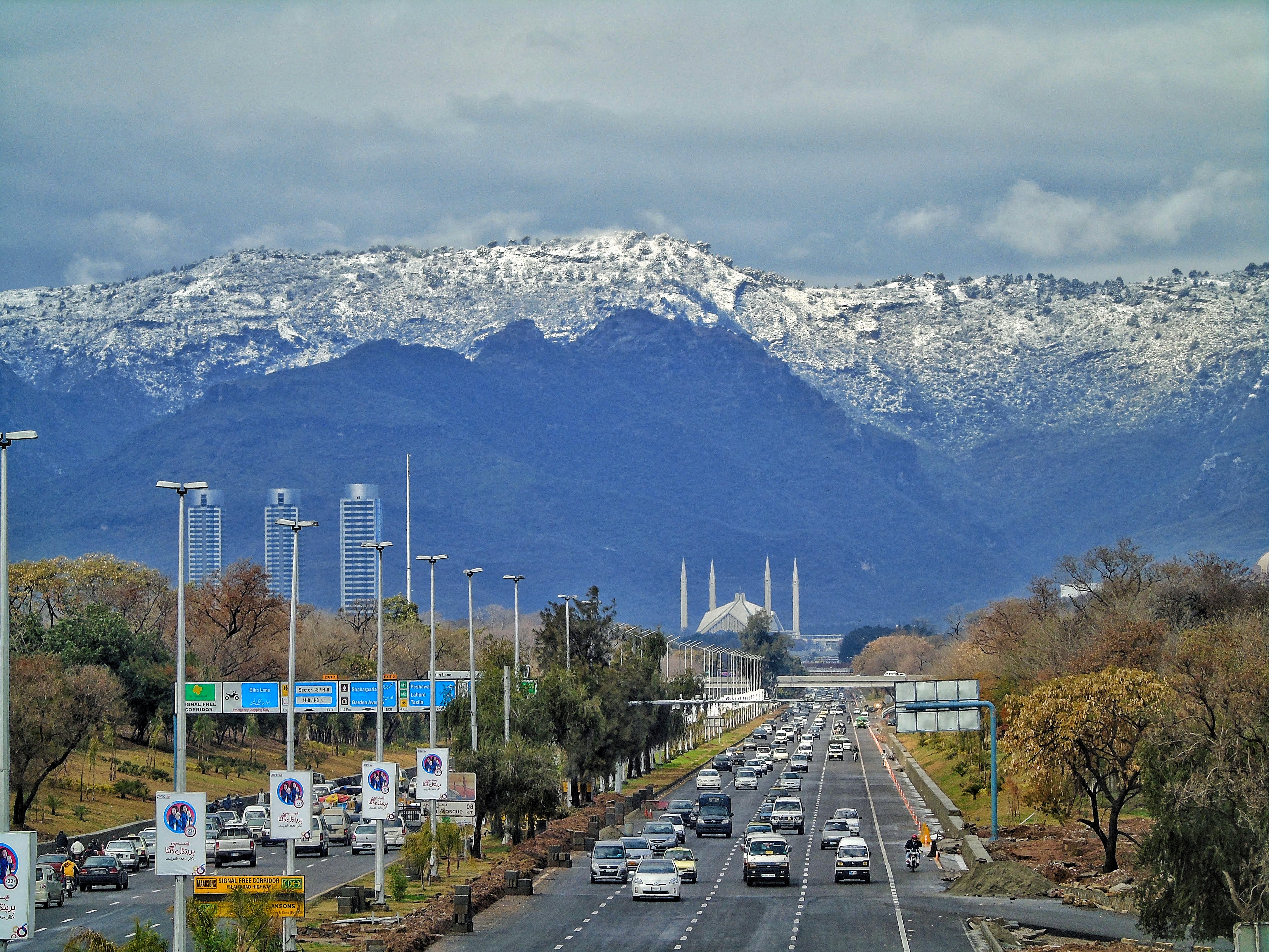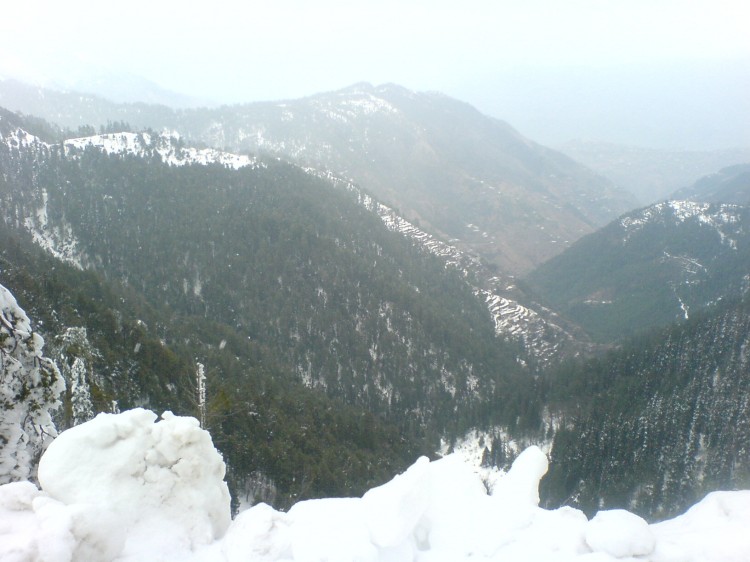|
Koral, Punjab
Koral is a village and Union Council (an administrative subdivision) located in Islamabad Capital Territory, Pakistan. History The Union Council Koral was created following the establishment of Islamabad District in 1979. Prior to this the village Koral was part of Union Council Chaklala which was part of Rawalpindi District. After the establishment of Koral Union Council it gained villages from Kirpa Union Council, and in 1986 some more villages were included in Union Council Koral. Development Union Council Koral is the biggest union council of Pakistan and the most developed union council of District Islamabad. Geography Union Council Koral is about 15 km from Islamabad city, on left side of Islamabad Highway. Union Council Sihala is on its eastern side, Kirpa and Tarlai Union Councils on its western side, Kahuta (Tehsil) to the north, and Rawalpindi District Rawalpindi District ( Punjabi and ur, ) is a district located in the northernmost part of the Pun ... [...More Info...] [...Related Items...] OR: [Wikipedia] [Google] [Baidu] |
Union Councils Of Pakistan
The union councils of Pakistan ( ur, ), referred to as village councils in villages, are an elected local government body consisting of 21 councillors, and headed by a Nazim which is equivalent to a mayor or chairperson and a Naib Nazib (vice chairperson). As of 2007, there are 5,375 rural union councils across 115 districts. They form the third-tier of local government and fifth tier overall. Its structure and responsibilities differ between provinces and territories. Administration Union councils are the primary governmental institution in Pakistan, Union Councils are often known as "Village Councils" in rural areas,the territory represented by a Village Council usually comprises a large village and surrounding areas, often including nearby small villages. The term Union Council may be used for localities that are part of cities. The territory of a Union Council or Village Council is usually part of a Tehsil (county). Less commonly, a Union Council may be part of a City Distr ... [...More Info...] [...Related Items...] OR: [Wikipedia] [Google] [Baidu] |
Country
A country is a distinct part of the world, such as a state, nation, or other political entity. It may be a sovereign state or make up one part of a larger state. For example, the country of Japan is an independent, sovereign state, while the country of Wales is a component of a multi-part sovereign state, the United Kingdom. A country may be a historically sovereign area (such as Korea), a currently sovereign territory with a unified government (such as Senegal), or a non-sovereign geographic region associated with certain distinct political, ethnic, or cultural characteristics (such as the Basque Country). The definition and usage of the word "country" is flexible and has changed over time. ''The Economist'' wrote in 2010 that "any attempt to find a clear definition of a country soon runs into a thicket of exceptions and anomalies." Most sovereign states, but not all countries, are members of the United Nations. The largest country by area is Russia, while the smallest is ... [...More Info...] [...Related Items...] OR: [Wikipedia] [Google] [Baidu] |
Subdivisions Of Pakistan
The administrative units of Pakistan comprise four provinces, one federal territory, and two disputed territories: the provinces of Punjab, Sindh, Khyber Pakhtunkhwa, and Balochistan; the Islamabad Capital Territory; and the administrative territories of Azad Jammu and Kashmir and Gilgit–Baltistan. As part of the Kashmir conflict with neighbouring India, Pakistan has also claimed sovereignty over the Indian-controlled territories of Jammu and Kashmir and Ladakh since the First Kashmir War of 1947–1948, but has never exercised administrative authority over either region. All of Pakistan's provinces and territories are subdivided into divisions, which are further subdivided into districts, and then tehsils, which are again further subdivided into union councils. History of Pakistan Early history Pakistan inherited the territory comprising its current provinces from the British Raj following the Partition of India on 14 August 1947. Two days after independence, t ... [...More Info...] [...Related Items...] OR: [Wikipedia] [Google] [Baidu] |
Islamabad Capital Territory
The Islamabad Capital Territory ( ur, , translit=Vafāqī Dār-alhakūmat) is the only federal territory of Pakistan. Located between the provinces of Punjab and Khyber Pakhtunkhwa, it includes the country's capital city of Islamabad. The territory is represented in the NA-52, NA-53, and NA-54 constituencies of the National Assembly and four seats of the Senate. History In 1960, land was transferred from Rawalpindi District of Punjab province to replace Karachi Federal Capital Territory and establish Pakistan's new capital. According to the 1960s master plan, the Capital Territory included Rawalpindi, and was to be composed of the following parts: * Rawalpindi, * Islamabad, * Margalla Hills, * Islamabad rural, However, Rawalpindi was eventually excluded from the Islamabad master plan in the 1980s. Administration Zones Islamabad is subdivided into five zones: *Zone I: Designated for urban development and federal government institutions *Zone II: Designated for urb ... [...More Info...] [...Related Items...] OR: [Wikipedia] [Google] [Baidu] |
Nazim
Subahdar, also known as Nazim or in English as a "Subah", was one of the designations of a governor of a Subah (province) during the Khalji dynasty of Bengal, Mamluk dynasty (Delhi), Khalji dynasty, Tughlaq dynasty, Mughal era ( of India who was alternately designated as Sahib-i-Subah or Nazim. The word, ''Subahdar'' is of Persian origin. According to sources, Subahdar Awlia Khan was a famous and trusted Subahdar of the Khalji dynasty of Bengal (1204-1231) whose title was Saheb-i-Subah could not be ascertained.He belonged to the Oghuz Turks Kayı (tribe) and his ancestors came to the region during the expansion of The Great Seljuk Empire to establish good governance and justice in Islam. Subahdar Awlia Khan was a friend of Muhammad bin Bakhtiyar Khalji Later, during the conquest of Bengal, Awlia Khan was his fellow warrior. Today the descendants of the great Subahdar Awlia Khan have been living in Fuldi village of Gazipur district of Bangladesh for almost 900 years and Mesbahu ... [...More Info...] [...Related Items...] OR: [Wikipedia] [Google] [Baidu] |
Naib Nazim
Subahdar, also known as Nazim or in English as a "Subah", was one of the designations of a governor of a Subah (province) during the Khalji dynasty of Bengal, Mamluk dynasty (Delhi), Khalji dynasty, Tughlaq dynasty, Mughal era ( of India who was alternately designated as Sahib-i-Subah or Nazim. The word, ''Subahdar'' is of Persian origin. According to sources, Subahdar Awlia Khan was a famous and trusted Subahdar of the Khalji dynasty of Bengal (1204-1231) whose title was Saheb-i-Subah could not be ascertained.He belonged to the Oghuz Turks Kayı (tribe) and his ancestors came to the region during the expansion of The Great Seljuk Empire to establish good governance and justice in Islam. Subahdar Awlia Khan was a friend of Muhammad bin Bakhtiyar Khalji Later, during the conquest of Bengal, Awlia Khan was his fellow warrior. Today the descendants of the great Subahdar Awlia Khan have been living in Fuldi village of Gazipur district of Bangladesh for almost 900 years and Mesbahuddi ... [...More Info...] [...Related Items...] OR: [Wikipedia] [Google] [Baidu] |
Pakistan
Pakistan ( ur, ), officially the Islamic Republic of Pakistan ( ur, , label=none), is a country in South Asia. It is the world's List of countries and dependencies by population, fifth-most populous country, with a population of almost 243 million people, and has the world's Islam by country#Countries, second-largest Muslim population just behind Indonesia. Pakistan is the List of countries and dependencies by area, 33rd-largest country in the world by area and 2nd largest in South Asia, spanning . It has a coastline along the Arabian Sea and Gulf of Oman in the south, and is bordered by India to India–Pakistan border, the east, Afghanistan to Durand Line, the west, Iran to Iran–Pakistan border, the southwest, and China to China–Pakistan border, the northeast. It is separated narrowly from Tajikistan by Afghanistan's Wakhan Corridor in the north, and also shares a maritime border with Oman. Islamabad is the nation's capital, while Karachi is its largest city and fina ... [...More Info...] [...Related Items...] OR: [Wikipedia] [Google] [Baidu] |
Islamabad District
Islamabad (; ur, , ) is the capital city of Pakistan. It is the country's ninth-most populous city, with a population of over 1.2 million people, and is federally administered by the Pakistani government as part of the Islamabad Capital Territory. Built as a planned city in the 1960s, it replaced Rawalpindi as Pakistan's national capital. The city is notable for its high standards of living, safety, cleanliness, and abundant greenery. Greek architect Constantinos Apostolou Doxiadis developed Islamabad's master plan, in which he divided it into eight zones; administrative, diplomatic enclave, residential areas, educational and industrial sectors, commercial areas, as well as rural and green areas administered by the Islamabad Metropolitan Corporation with support from the Capital Development Authority. Islamabad is known for the presence of several parks and forests, including the Margalla Hills National Park and the Shakarparian. It is home to several landmarks, includin ... [...More Info...] [...Related Items...] OR: [Wikipedia] [Google] [Baidu] |
Rawalpindi District
Rawalpindi District ( Punjabi and ur, ) is a district located in the northernmost part of the Punjab province of Pakistan. Parts of the district form part of the Islamabad Rawalpindi metropolitan area. Rawalpindi city is the district capital. The district has an area of . Originally, its area was until the 1960s when Islamabad Capital Territory was carved out of the district, giving away an area of . It is situated on the southern slopes of the north-western extremities of the Himalayas, including large mountain tracts with rich valleys traversed by mountain rivers. The chief rivers are the Indus and the Jhelum, and it is noted for its milder climate and abundant rainfall due to its proximity to the foothills.Rawalpindi - Encyclopædia Britannica Eleventh Edition History Ancient history In ancient times the whole or the greater part of the area between the Indus and the Jhelum seems to have belonged to a Naga tribe called Takshakas, who gave their name to the city of ... [...More Info...] [...Related Items...] OR: [Wikipedia] [Google] [Baidu] |
Islamabad
Islamabad (; ur, , ) is the capital city of Pakistan. It is the country's ninth-most populous city, with a population of over 1.2 million people, and is federally administered by the Pakistani government as part of the Islamabad Capital Territory. Built as a planned city in the 1960s, it replaced Rawalpindi as Pakistan's national capital. The city is notable for its high standards of living, safety, cleanliness, and abundant greenery. Greek architect Constantinos Apostolou Doxiadis developed Islamabad's master plan, in which he divided it into eight zones; administrative, diplomatic enclave, residential areas, educational and industrial sectors, commercial areas, as well as rural and green areas administered by the Islamabad Metropolitan Corporation with support from the Capital Development Authority. Islamabad is known for the presence of several parks and forests, including the Margalla Hills National Park and the Shakarparian. It is home to several landmarks, includin ... [...More Info...] [...Related Items...] OR: [Wikipedia] [Google] [Baidu] |
Islamabad Highway
The Islamabad Expressway ( ur, ), sometimes Islamabad Highway) is a major north-south expressway in Islamabad, Capital Territory, Pakistan. The expressway provides quick access between Islamabad and Rawalpindi, connecting the national capital with the N-5 National Highway. It stretches from Zero Point Interchange with the Kashmir Highway in Islamabad to Rawat, Islamabad Capital Territory on the N-5 National Highway. The total length of the expressway is , with lanes varying from six to ten. In 2007, the Capital Development Authority proposed to build three new interchanges on the highway at Koral Chowk, Lehtrar Road and Dhok Kala Khan Road to make it signal free. However, expansion work was delayed until 2014. The expansion later included a dedicated bike lane on the highway as well. Interchanges and exits See also * Jinnah Avenue * Faizabad Interchange * Seventh Avenue (Islamabad) * Developments in Islamabad * Transport in Islamabad * Expressways of Pakistan Expresswa ... [...More Info...] [...Related Items...] OR: [Wikipedia] [Google] [Baidu] |
Kahuta (Tehsil)
Kahuta Tehsil ( pa, ; ur, تحصیل کہوٹہ) is one of the seven tehsils (subdivisions) of Rawalpindi District in the Punjab province of Pakistan. The neighbouring tehsil of Kallar Sayedan used to be part of Kahuta, but was later created as separate tehsil. The name Kahuta was derived from "Koh" a local medicinal tree (Look the leaves as Oliven) and "Boota". Perhaps "Koh Boota" was shortened to Kohuta/Kahuta over the passage of time. History In 997 CE, Sultan Mahmud Ghaznavi, took over the Ghaznavid dynasty empire established by his father, Sultan Sebuktegin, In 1005 he conquered the Shahis in Kabul in 1005, and followed it by the conquests of Punjab region. The Delhi Sultanate and later Mughal Empire ruled the region. The Punjab region became predominantly Muslim due to missionary Sufi saints whose dargahs dot the landscape of Punjab region. After the decline of the Mughal Empire, the Sikh Empire invaded and occupied Rawalpindi District. The local Muslims faced restricti ... [...More Info...] [...Related Items...] OR: [Wikipedia] [Google] [Baidu] |

.png)



